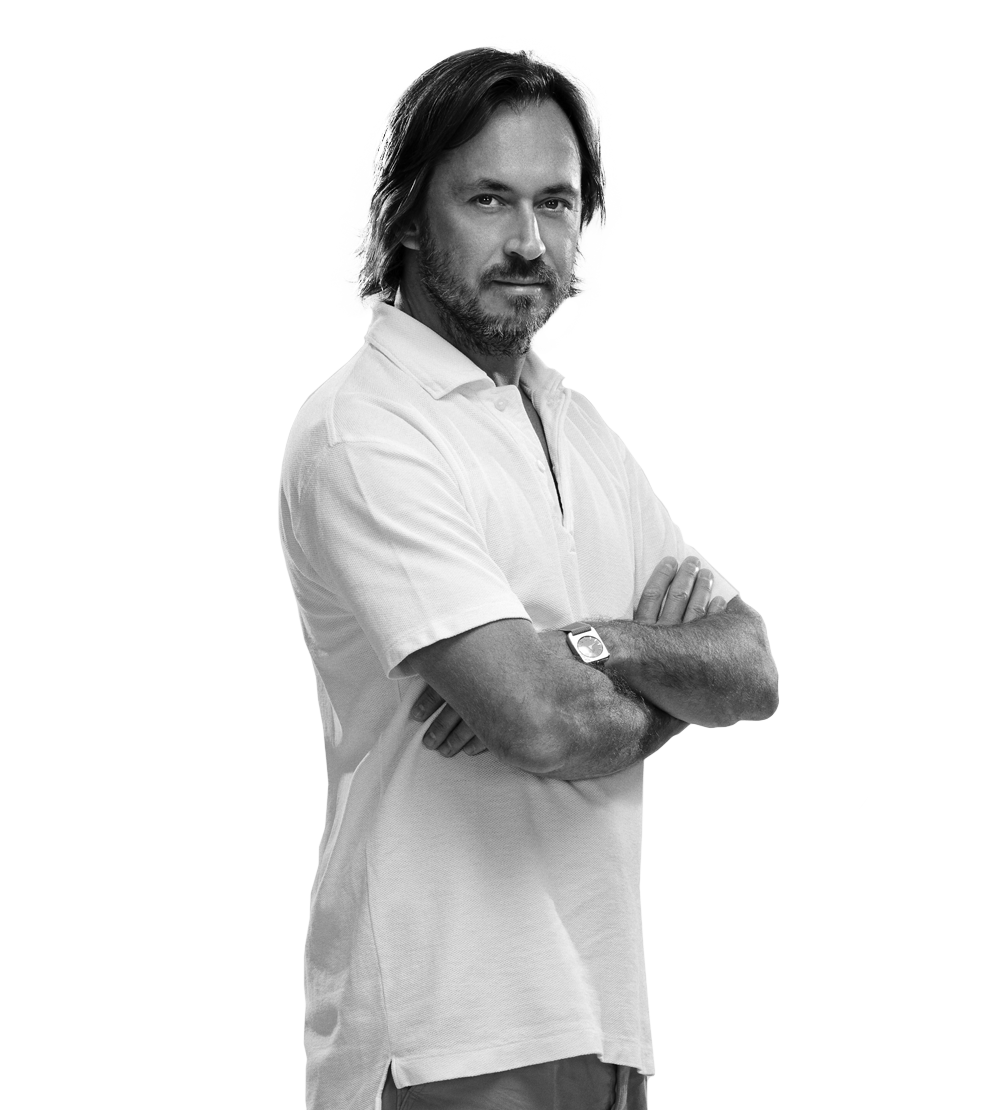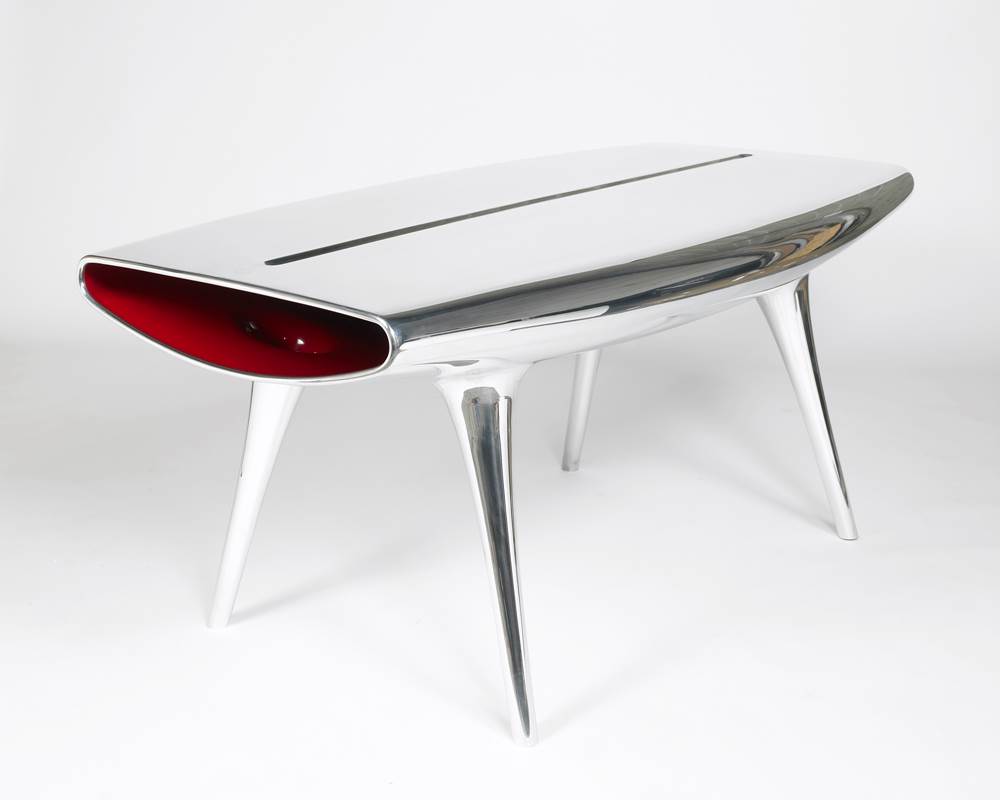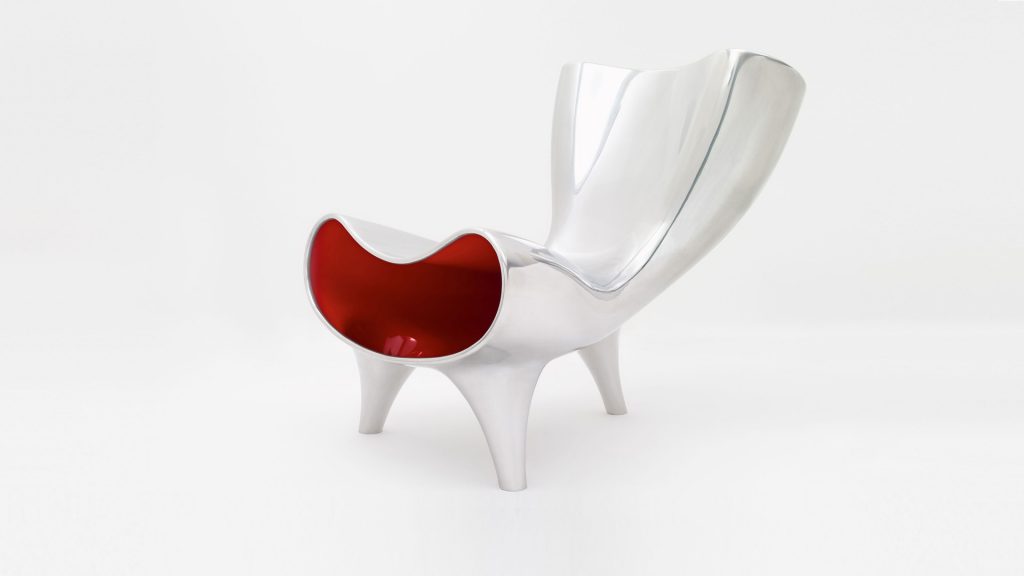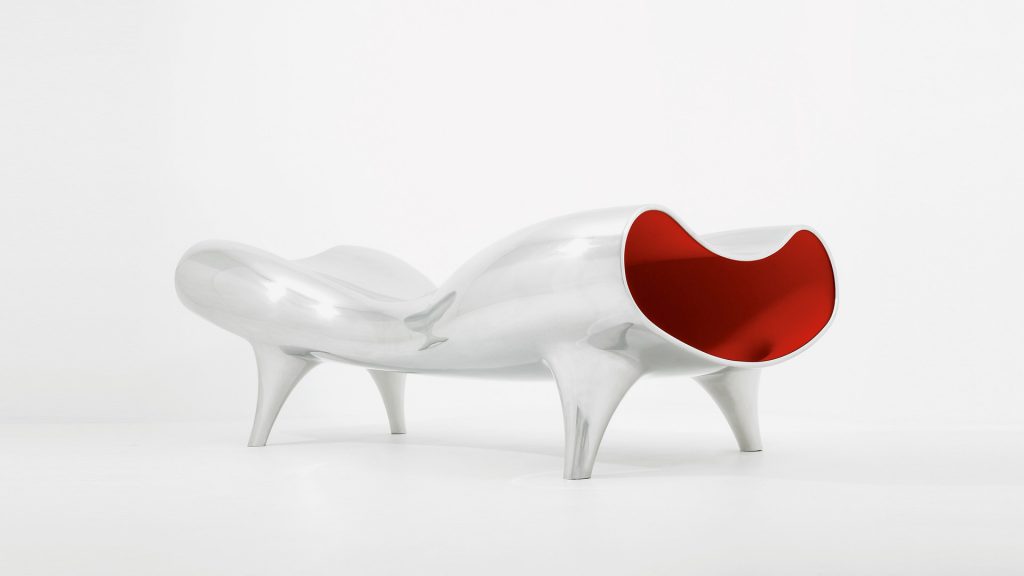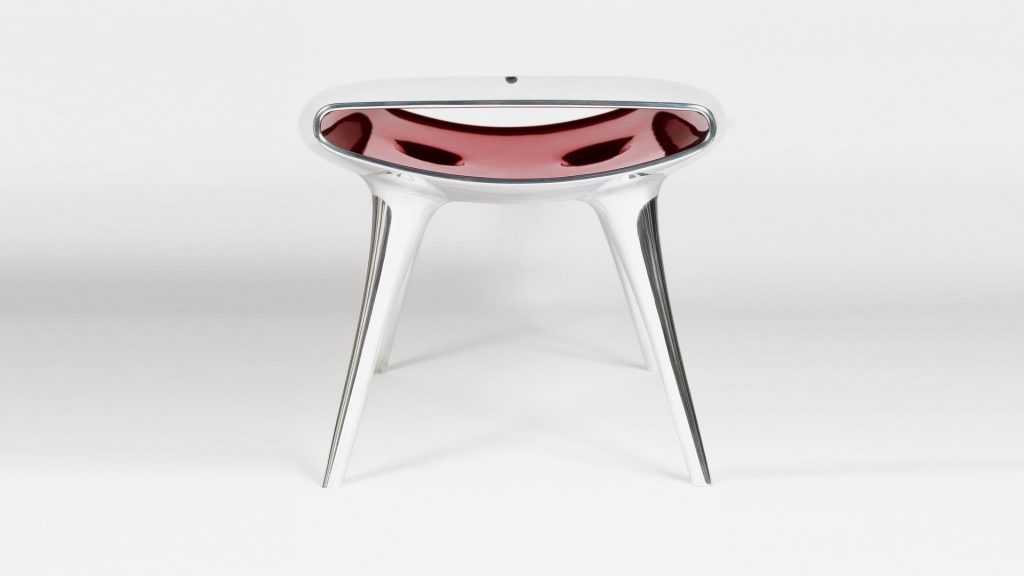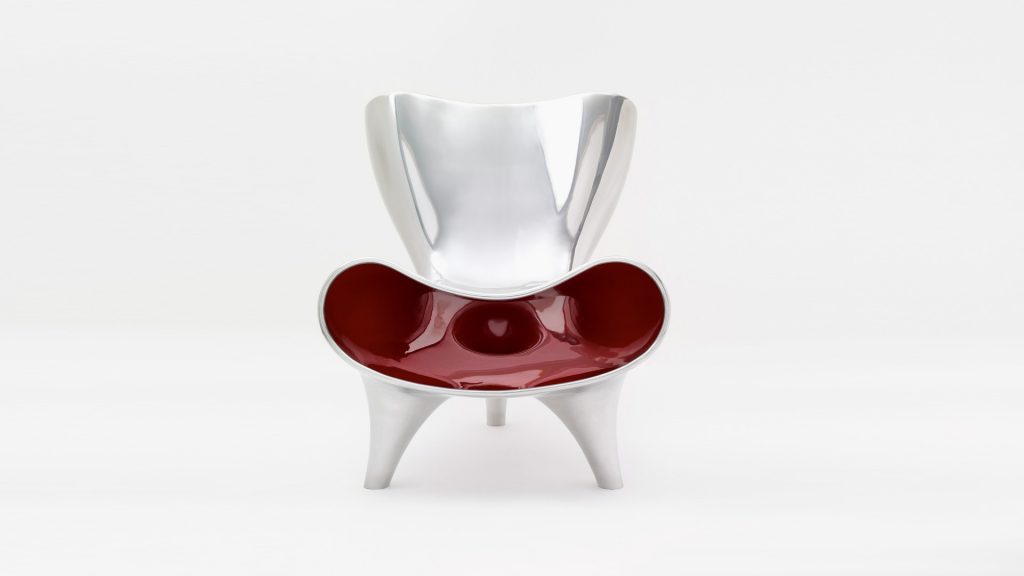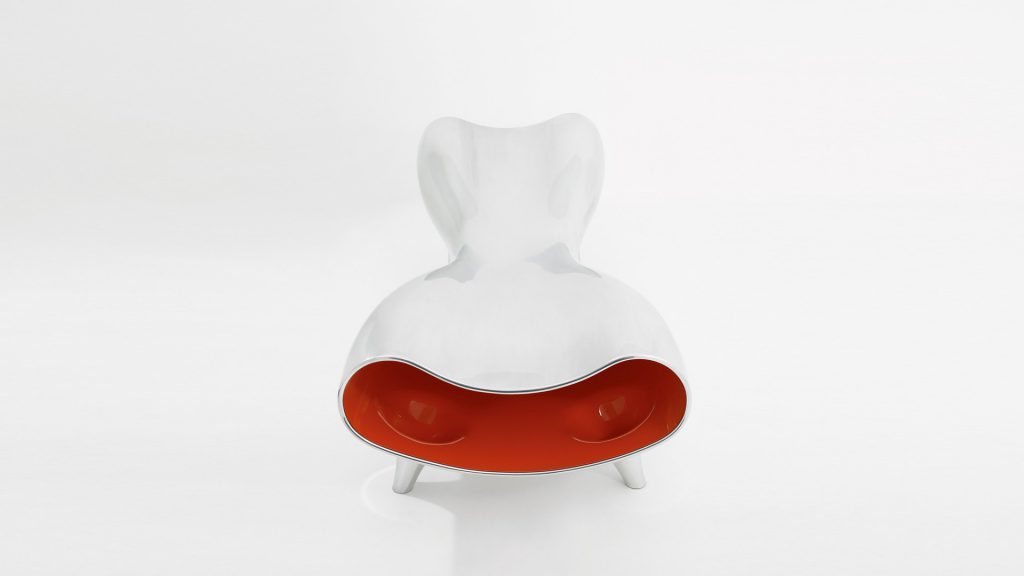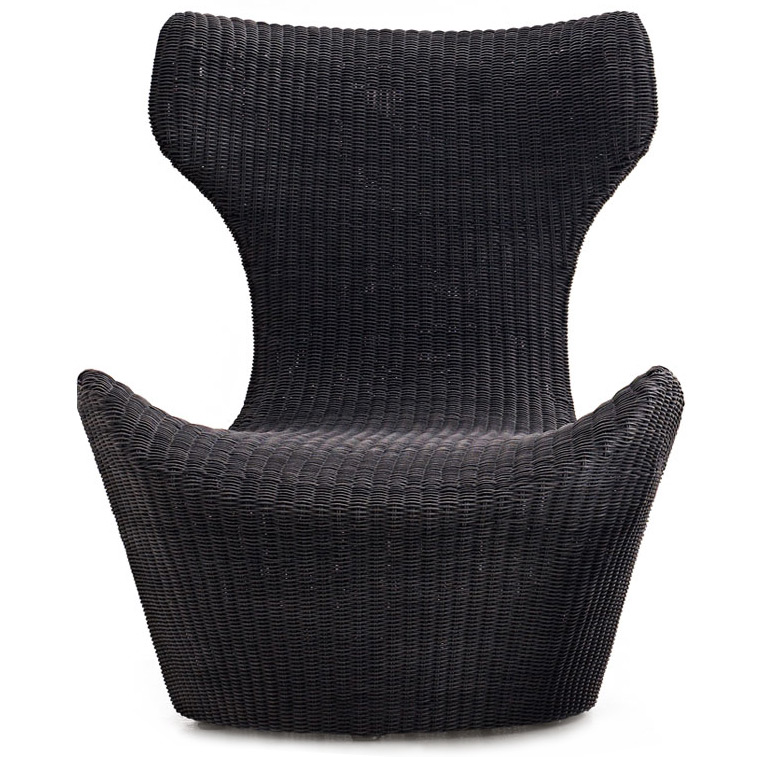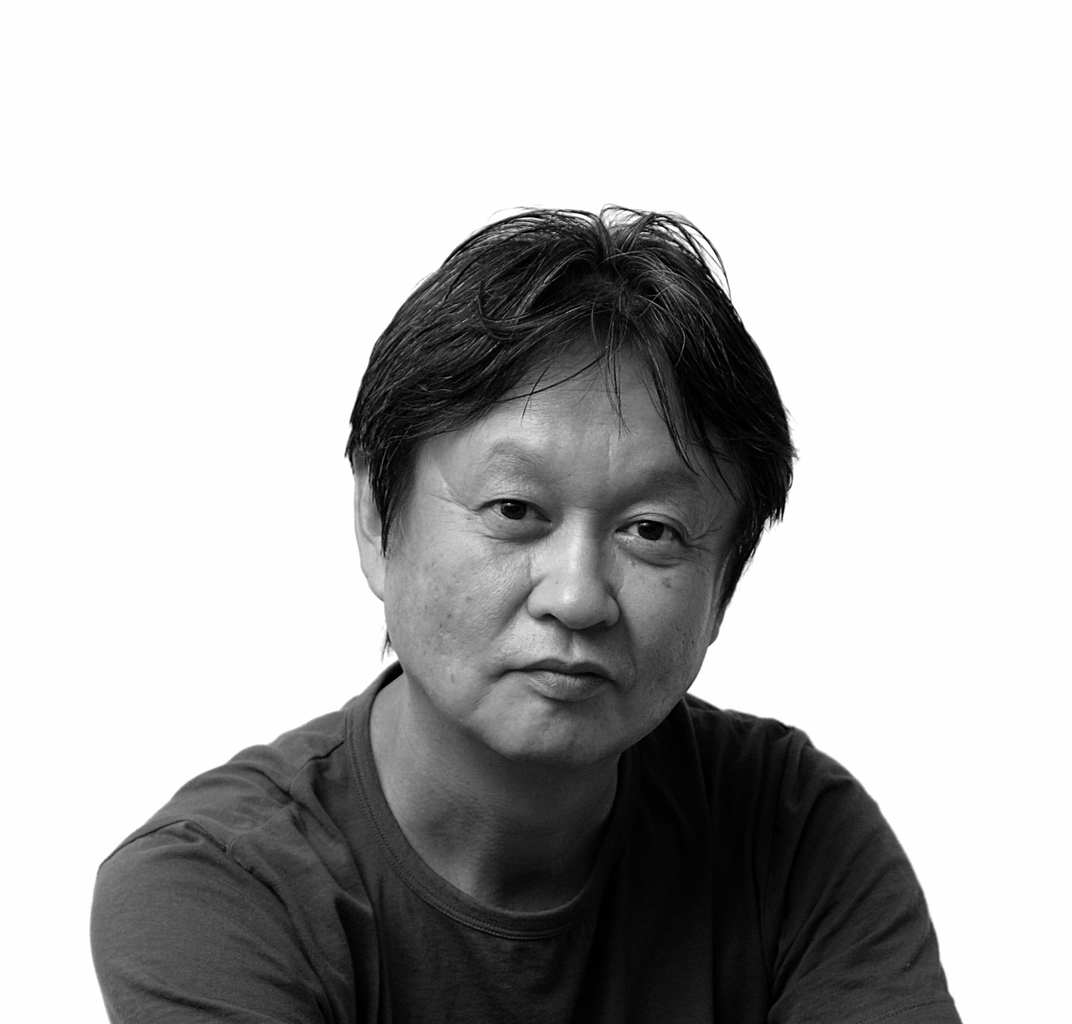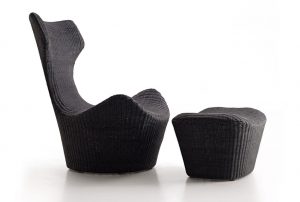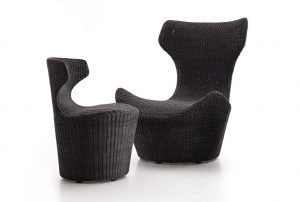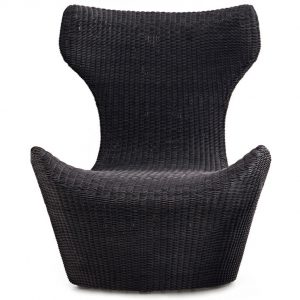Marc Newson
This man is handsome indeed but I was first attracted to the organic and fluid forms of his furniture designs.
Fluid Forms integrating positive and negative spaces

There are so many things I like about Marc Newson’s works. Let’s cut to the chase, isn’t his furniture designs simply brilliant? Take for example the Orgone Stretch Lounge, a companion piece to the Event Horizon Table and the Orgone Chair.
At first glance, I wondered why was the interior of the furniture hollowed. I begin reading more about the set of works on the designer’s website to realise that it was a fluid form that he was trying to achieve through the integration of positive and negative spaces in the presentation of his work.
“Subconsciously, I think I started leaving holes and spaces because it seemed such a shame to cover up some very high-quality manufacturing and finishing. Both the interior and the exterior of the work merge together creating a fluid and utile object with a liminal space that draws the outer surface inside and vice versa: there is an interstice where the interior voids become the exterior legs. I do like the idea of creating negative space within forms.”
While Marc Newson explained that the voids were evidences of high-quality process work, some may say that it wasn’t even necessary to make an effort to show off the interior of the furniture.
Personally, I felt that Marc made a very decent and intellectual approach to exclude the close ends of the organic tubes and leave the pieces hollow. The apparent voids adds a graceful and effortless appearance to the end product.
The form was mentioned to be what Marc was aiming to achieve when he made the Lockheed Lounge in 1988, which was five years back before he had the knowledge and resources to make the Orgone Stretch Lounge, 1993.

He manage to fabricate the form with help from Aston Martin restoration firm near London, where the coachbuilders there were highly skilled at welding, wheeling, and forming, and worked almost exclusively in aluminium.

Read more about Orgone Stretch Lounge here.
Detachable and Replaceable
Another of Marc’s work that I really like is Bucky for its detachable and replaceable function.

Invited by Hervé Chandès to create an installation at the Fondation Cartier in Paris, Marc designed a self-supporting geodesic dome titled ‘Bucky’, measuring about 6.5 meters in diameter. The dome was constructed from individual triangular chair-like units, each one in a different colour (blue, yellow, red, green and pink).
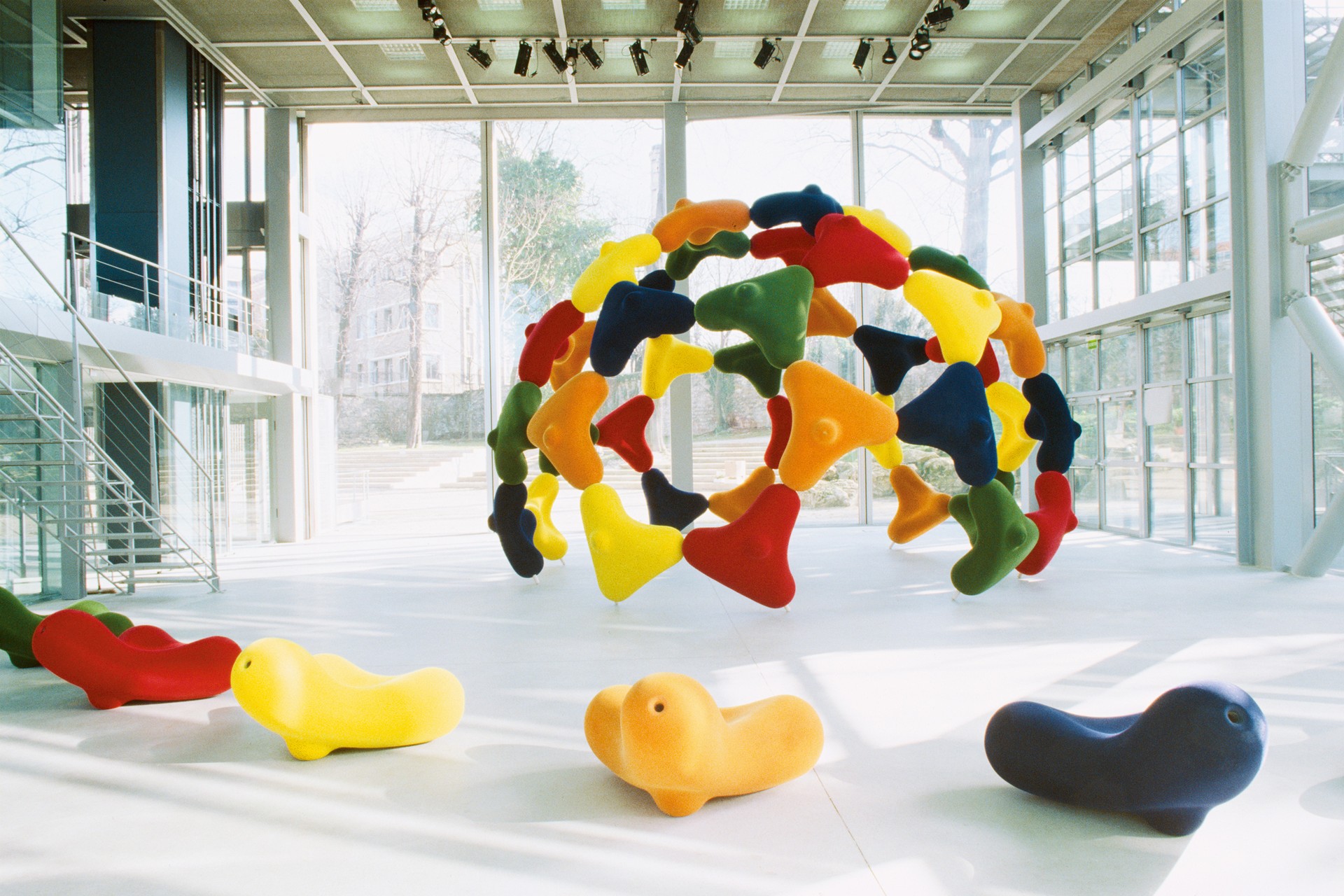
“I called it Bucky after the newly-discovered carbon molecule, the Buckminsterfullerene, which in turn got is name from the way the arrangements of atoms resembled the structures of Buckminster Fuller’s geodesic domes.”
The hexagonal structure of the Buckminsterfullerene can also be found in many other innovations like our modern football and goal net which we are familiar with.

P.s. Did I mention that Marc Newson Edition of 60 chairs (unnumbered) started its exhibit the same year I was born?
Read more on Bucky installation here.
Fractal geometry
Lastly, I am completely absorbed into the world of fractals looking at Marc’s fractal inspired jewellery design, Julia Necklace.
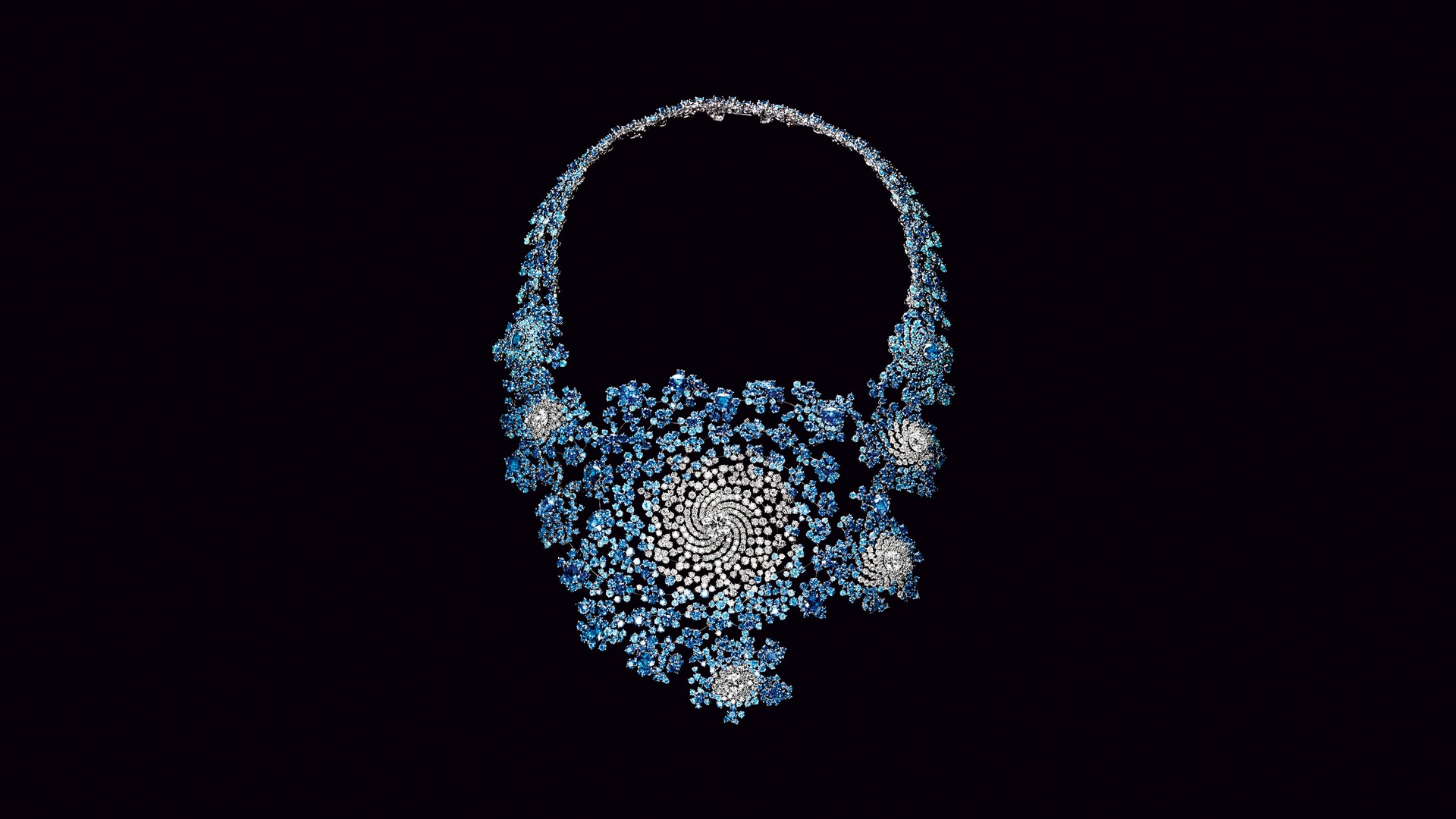
“One thing that I’d always been fascinated by, like a lot of people, was fractal geometry, because it really underlined my fascination with scale. I like the way certain objects can transcend scale. It’s one thing to try and mimic fractals in two dimensions, but you risk losing the character, which is infinite and utterly irregular. There’s an underlying order but it’s all slightly unexpected, and that’s what gives it its character.”
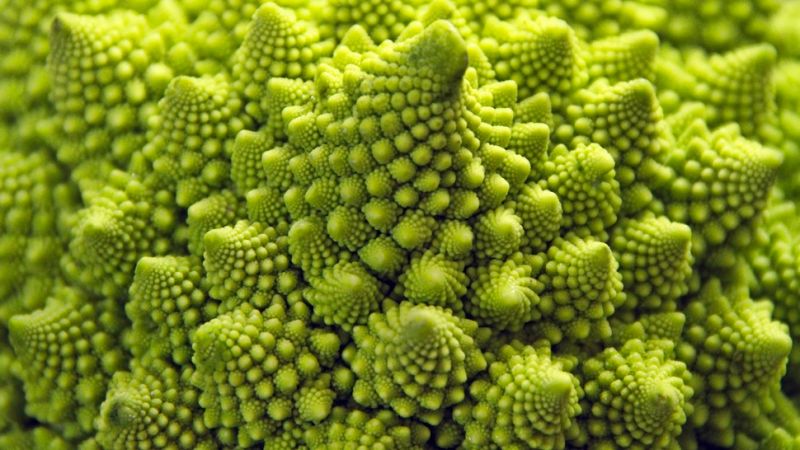
The endless repetition of fractals are a part of nature that intrigue me as much as it did to Marc. Marc has made use of biomimicry in the representation of the Julia Necklace to exhibit the intricacies and complexities of the design. Although the Julia Necklace appears two dimensional upfront, Marc has deliberately designed the jewellery piece to be asymmetrical (heavier on the left than the right with reference to the image of Julia Necklace, 2009), giving the necklace a sense of unpredictability (appearing different from various perspectives), thus its three-dimensional quality.
Read more about Julia Necklace here.
To conclude, I really enjoyed reading up on Marc Newson, one of the most influential industrial designer in his time. This Sydney-born multi-disciplinary designer has indeed captivated me and make me want to learn more about what it takes to become an industrial designer.
Before I realise it, this post has become much much longer than my previous post on Naoto Fukasawa (whom I thought I best identified with). I am not going to deny they are both great industrial designers. It’s hard for me to choose, but it is quite clear whom I have grown more interest in. Lets continue to read up on similar industrial designers for our learning.
“The worst prison would be a closed heart” Pope John Paul II
